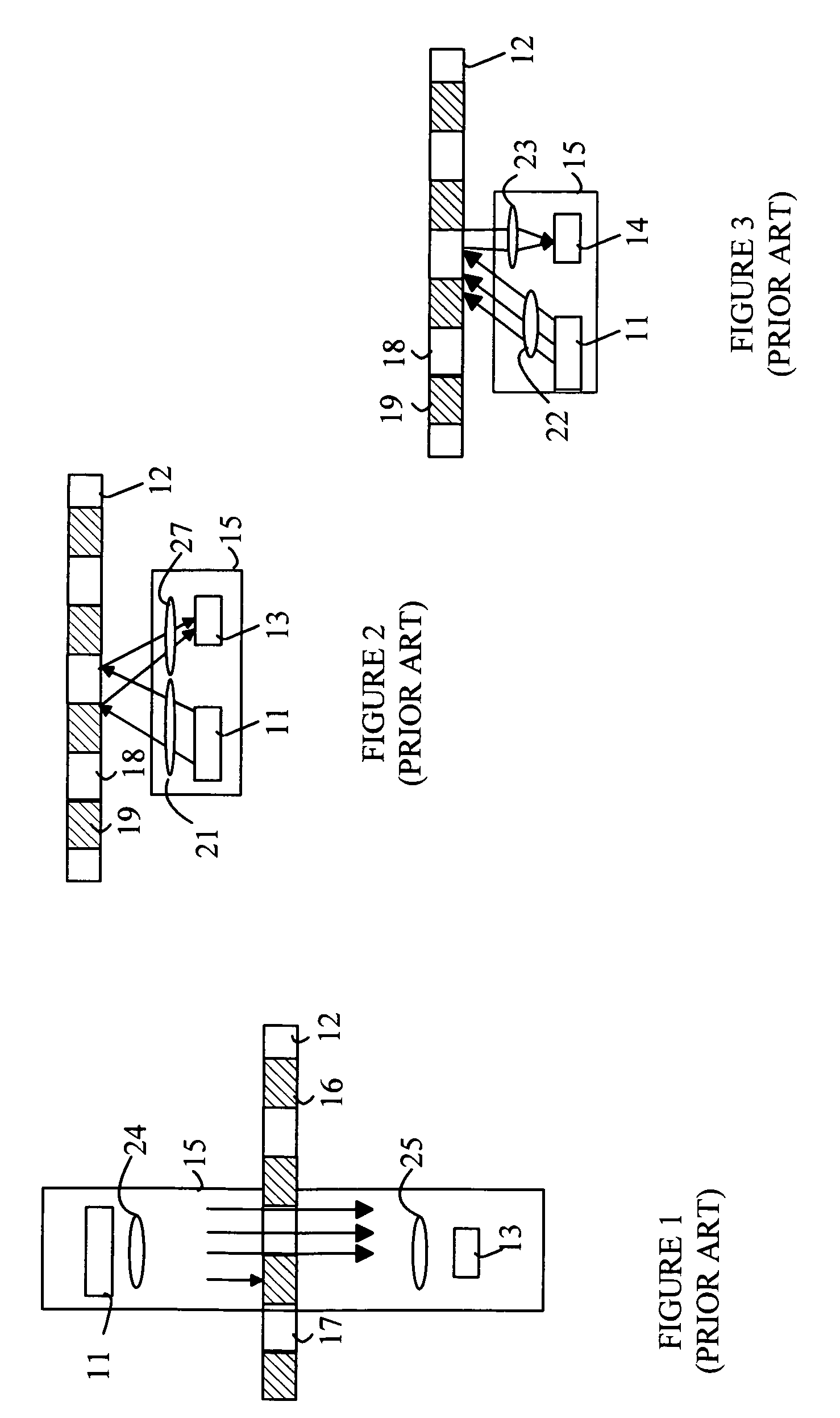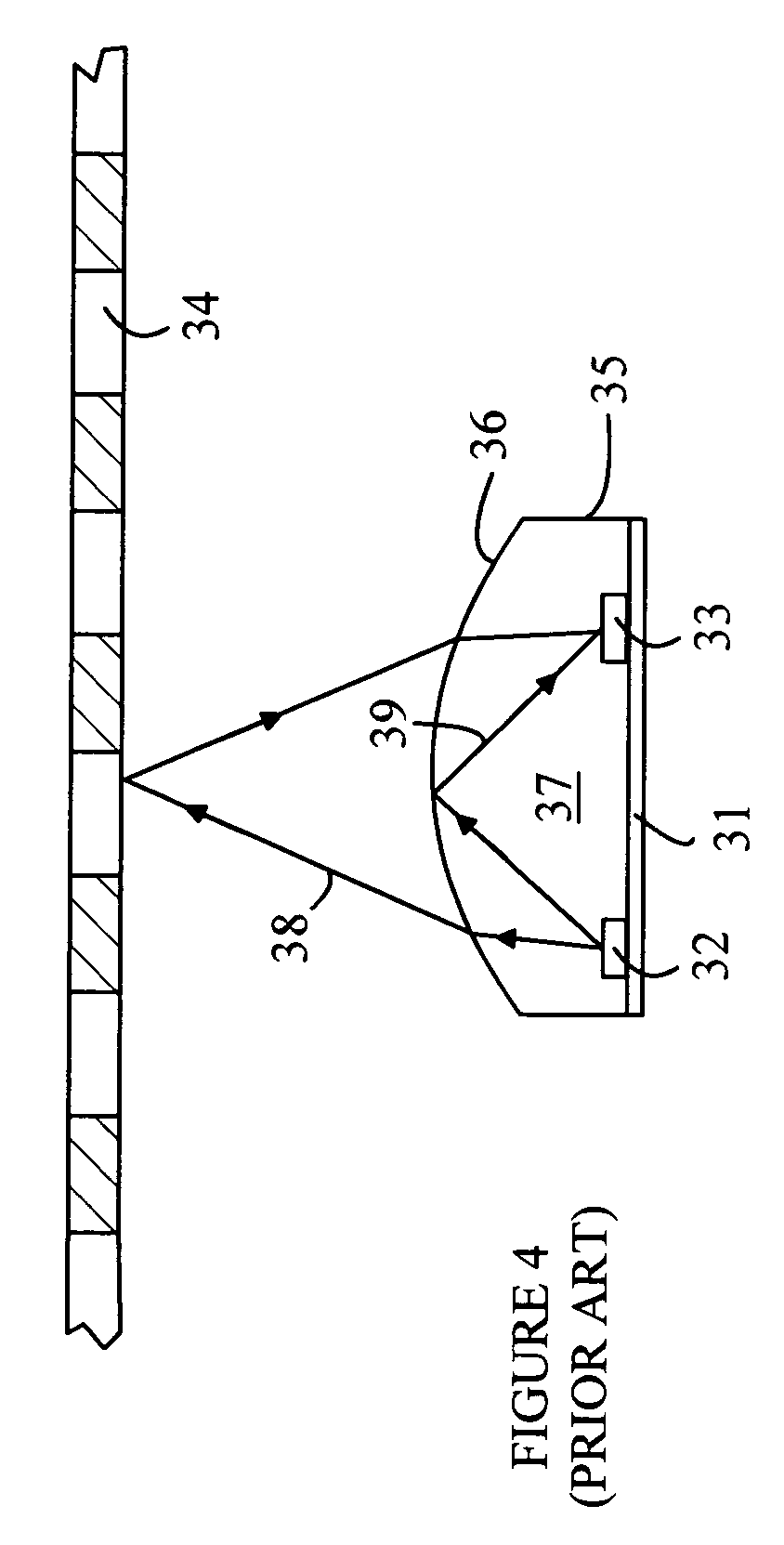Reflective encoder with three-dimensional code carrier
a technology of encoder and encoder, applied in the direction of converting sensor output, measurement device, instruments, etc., can solve the problem of image being out of focus
- Summary
- Abstract
- Description
- Claims
- Application Information
AI Technical Summary
Benefits of technology
Problems solved by technology
Method used
Image
Examples
Embodiment Construction
[0020]Refer now to FIGS. 1-3, which illustrate some typical encoder designs. The encoder can be divided into an emitter / detector module 15 and a code wheel or code strip. Module 15 includes an emitter 11 that illuminates a portion of the code strip 12. The illuminated code strip is viewed by detector 13. The emitter typically utilizes an LED as the light source. The detector is typically based on one or more photodiodes. FIG. 1 illustrates a transmissive encoder. In transmissive encoders, the light from the emitter is collimated into a parallel beam by a collimating optic such as lens 24. Code strip 12 includes opaque stripes 16 and transparent stripes 17. When code strip 12 moves between emitter 11 and detector 13, the light beam is interrupted by the opaque stripes on the code strip. The photodiodes in the detector receive flashes of light. The resultant signal is then used to generate a logic signal that transitions between logical one and logical zero.
[0021]The detector can incl...
PUM
 Login to View More
Login to View More Abstract
Description
Claims
Application Information
 Login to View More
Login to View More - R&D
- Intellectual Property
- Life Sciences
- Materials
- Tech Scout
- Unparalleled Data Quality
- Higher Quality Content
- 60% Fewer Hallucinations
Browse by: Latest US Patents, China's latest patents, Technical Efficacy Thesaurus, Application Domain, Technology Topic, Popular Technical Reports.
© 2025 PatSnap. All rights reserved.Legal|Privacy policy|Modern Slavery Act Transparency Statement|Sitemap|About US| Contact US: help@patsnap.com



